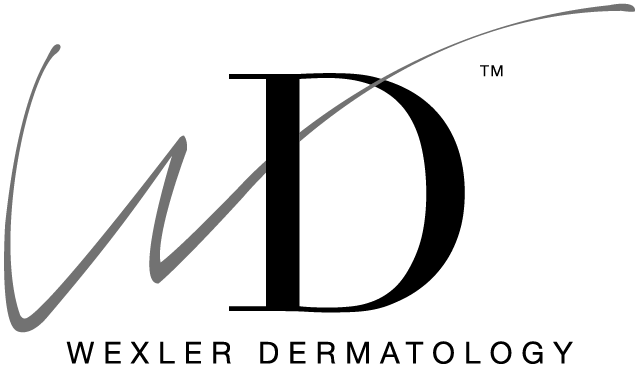Hyperpigmentation
The Science
The presence of a chemical called melanin in our skin determines a lot about our skin color. Genetics and ethnicity play a big part in our natural pigmentation: whether we have freckles or café-au-lait spots, pale or dark skin. But hyperpigmentation, which is a radical darkening of patches of skin, is almost always the result of photodamage of some kind. “The same thing associated with hyperpigmentation will also contribute to dullness, lines, wrinkles, and thinner skin,” remarks Dr. Patricia Wexler.
Every hour we spend in the sun without sunscreen leaves a mark on our skin. At first, these marks are unseen, but over time, our skin produces melanin in order to protect itself from damage. This is the essence of tanning. What we call hyperpigmentation is different: the color becomes localized, leading to uneven skin tone. In the case of a skin condition like melasma, these patches are brownish or grey. Other types of hyperpigmentation, like age spots, are more akin to freckles. The effect of hyperpigmentation gives the skin an uneven appearance often associated with aging.
Our Approach
Treating pigmentation issues requires a great deal of artistry, since not all skin reacts the same way to treatment. For example, certain skin types respond to lasers, while in other cases, a laser can make the condition worse. That’s why we work closely with our patients and take measures to ensure we’re solving and preventing problems.
Once we have determined that the discoloration is not the result of an additional concern (such as skin cancer), we’ll ask you about your history and ethnicity in order to better understand your skin type. Beginning with a less invasive approach, we may suggest hydroquinone (a topical skin lightener) or a chemical peel as one of the first steps to evening out skin tone. “[Peels are] a great alternative to laser that work well on all [complexions], especially olive and dark,” says Dr. Patricia Wexler. From there, we may recommend more powerful light- or laser-based treatments like IPL or Fraxel® DUAL. But remember, while our procedures can help erase discoloration, it’s a conditional “cure”; UV exposure must be avoided or else the discoloration may return.
What We Offer
- Topical Prescription Treatments
- Personalized Skincare Regimen
- Personalized Lifestyle Guidelines
- Microdermabrasion
- DermaSweep
- Chemical Peels
- YAG
- Fraxel DUAL
Read More About Hyperpigmentation
Dr Patricia featured on IntoTheGloss article: Your SPF Questions, Answered
Your SPF Questions, Answered
Dr Patricia featured on MarieClaire.com article: The Pros and Cons of “Dermarolling,” AKA Stabbing Your Skin Thousands of Times with Needles to Make It Prettier
The Pros and Cons of “Dermarolling,” AKA Stabbing Your Skin Thousands of Times with Needles to Make It Prettier
Dr Patricia featured on Coveteur.com article: This is The Ultimate Way To Lighten Dark Spots
This is The Ultimate Way To Lighten Dark Spots
Dr Patricia featured on InStyle.com article: This Is How to Fade Those Dark Spots on Your Skin
This Is How to Fade Those Dark Spots on Your Skin
Dr Patricia featured on Vogue.com article: The Best Dark Spot Serums: Do They Really Work?
The Best Dark Spot Serums: Do They Really Work?
Meet Our Experts




